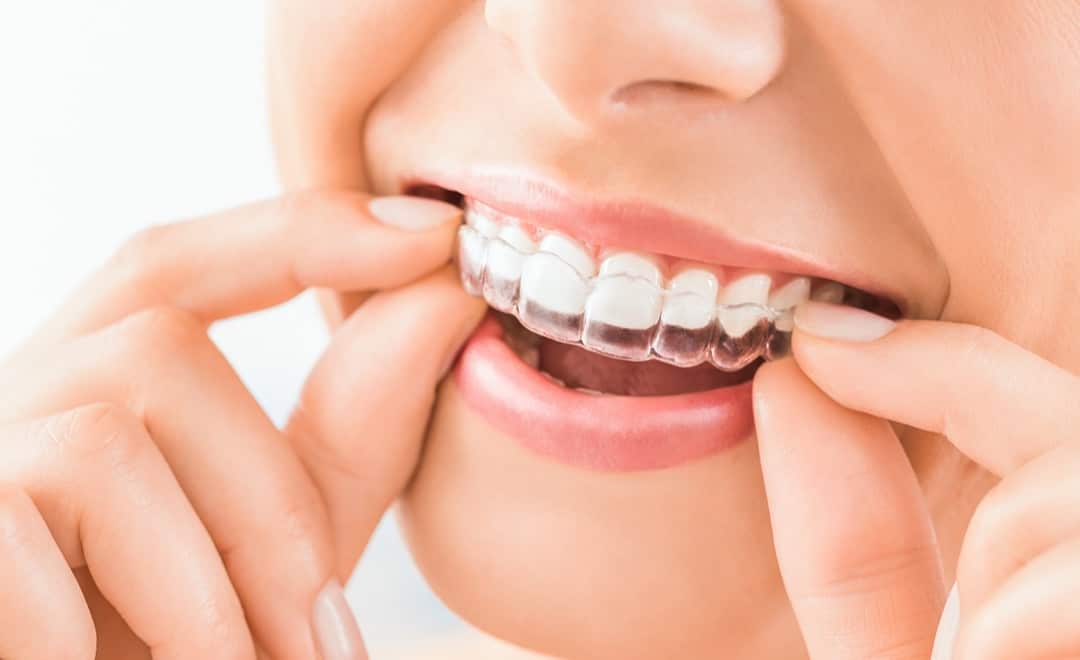Metal braces have a reputation for being noticeable and prominent. For adults and older teenagers looking for more discreet orthodontics, Stellar Family Orthodontics in Mukilteo and Mill Creek, Washington, offer ceramic braces, an appealing option for those who dislike the appearance of traditional orthodontics.
Dr. Chad Carver, DMD, is a family ortho who cares how you feel about the appearance of your smile. To provide you the best orthodontic care possible, he makes it a priority to educate you on all your orthodontic options. Ceramic and metal braces are both excellent orthodontic treatments, but which is right for you?
Ceramic vs. Metal Braces
Ceramic and metal brace both correct orthodontic concerns, but each has its own advantages and drawbacks for different people.
What are metal braces?
Metal braces typically consist of stainless steel brackets and wires. The steel is a medical-grade material, so it’s extremely durable and long-lasting. Most orthodontists recommend traditional metal braces for children and teens because they’re stronger and less expensive than other orthodontic treatments.
Advantages of metal braces
Metal braces offer many advantages over their ceramic counterparts. Benefits of metal braces include:
- Affordability
- Strength
- Durability
- Color options
- Less discoloration
Since braces contain dark metal materials, they show less discoloration than ceramic braces, which blend in with the color of your teeth.
Disadvantages of metal braces
There’s a reason why people often choose ceramic braces over metal brackets and wires. They’re typically more attractive and discreet than metal braces. Common disadvantages of metal braces include:
- Noticeable appearance
- Bulk
- Dark colors
- Difficulty cleaning
Another factor to consider with metal materials is that they’re typically less comfortable than ceramic braces. Since metal materials are inherently abrasive, they can irritate the gums and tissue inside your cheeks.
What are ceramic braces?
Ceramic braces, or clear braces, are constructed with tooth-colored materials. The brackets are often translucent, while the wires color match to the natural shade of your teeth. Though ceramic braces are less noticeable than metal orthodontics, they aren’t entirely invisible. Others will still be able to tell you’re wearing braces, but the materials are not as obvious as metal options.
Advantages of ceramic braces
Ceramic braces are appealing for older teenagers and adults alike. This is mostly due to their inconspicuous nature. Common benefits of ceramic braces include:
- More attractive than metal braces
- Less bulky
- Minimal pain
- Less abrasive
If you have sensitive gums or are prone to inner cheek discomfort, ceramic braces are a good option.
Disadvantages of ceramic braces
Unfortunately, ceramic braces aren’t for everyone. While more obscure than metal braces, they aren’t a one-size-fits-all solution. Common disadvantages of ceramic braces include:
- More expensive than metal braces
- Less durable
- Less effective for difficult cases
- Harder to clean
The ceramic materials these braces utilize are more brittle and easier to damage than metal braces. They’re also larger and require more care, so most orthodontists only recommend ceramic braces for the upper front teeth. These are typically the most visible teeth.
Can I straighten my teeth without braces?
If neither ceramic nor metal braces sounds like an appealing option for you, clear aligners may be the right solution. Invisalign® is a system of clear aligners that can straighten teeth and correct other orthodontic issues, such as an overbite.
Unlike braces, clear aligners are removable devices that mold to the shape of your teeth. Dr. Carver uses the iTero® intraoral scanner to take highly accurate digital impressions of your mouth. Then, he views the impressions to create a customized treatment plan.
Every 2-3 weeks, you receive a new set of translucent aligners, which are made out of BPA-free plastic. These clear aligners are invisible to the naked eye, so they don’t draw attention to your teeth.
Advantages of clear aligners
There are many advantages to Invisalign over brace, such as:
- More aesthetically pleasing
- Shorter treatment time
- Removable
- No food or drink limits
- More comfortable
- More hygienic
Invisalign is removable, so it’s easy to brush and floss as you normally would. You can also take them out to eat and drink.
Disadvantages of clear aligners
Like ceramic braces, Invisalign isn’t the right treatment for everyone. Although they are suitable for most adults, disadvantages of clear aligners include:
- Fewer treatment options
- More expensive
- Easy to lose
- Less effective for difficult cases
Interested in learning more about metal braces, ceramic braces, or clear aligners? Call Stellar Family Orthodontics for a free orthodontic consultation or schedule an appointment online today!




